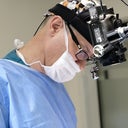Posted underRhinoplasty q&a
Can I achieve a 5 mm deprojection? Would I be risking any future complications due to excess skin? (photos)
Hello. Thank you for taking your time to answer. In an ideal world I would hope to achieve a 5mm deprojection. Is it possible? And if yes qould I have any risks in the long run because of the excess skin? Thank you.
Answers (9)
From board-certified doctors and trusted medical professionals
Dr. Lucian Ion, FRCS

Dr. Lucian Ion, FRCS
Specialist Registered Plastic Surgeon
Answer
Dr. Eric M. Joseph, MD

Dr. Eric M. Joseph, MD
Board Certified Facial Plastic Surgeon
Answer
Dr. Steven M. Denenberg, MD

Dr. Steven M. Denenberg, MD
Board Certified Facial Plastic Surgeon
Answer
Dr. John Michael Thomassen, MD

Dr. John Michael Thomassen, MD
Board Certified Plastic Surgeon
Answer
Dr. Ronald J. Edelson, MD

Dr. Ronald J. Edelson, MD
Board Certified Plastic Surgeon
Answer
Dr. Robert Ciardullo, MD
Dr. Robert Ciardullo, MD
Board Certified Plastic Surgeon
Answer
Dr. Giriraj K. Sharma, MD, MS
Dr. Giriraj K. Sharma, MD, MS
Board Certified Otolaryngologist
Answer
More Rhinoplasty Questions
See all Rhinoplasty Q&AWE SEND PRETTY
EMAILS
What’s trending? Who’s turning heads? Which TikTok myths need busting? We’ve got you. No fluff, no gatekeeping—just real talk. Get our free, unfiltered newsletter.
